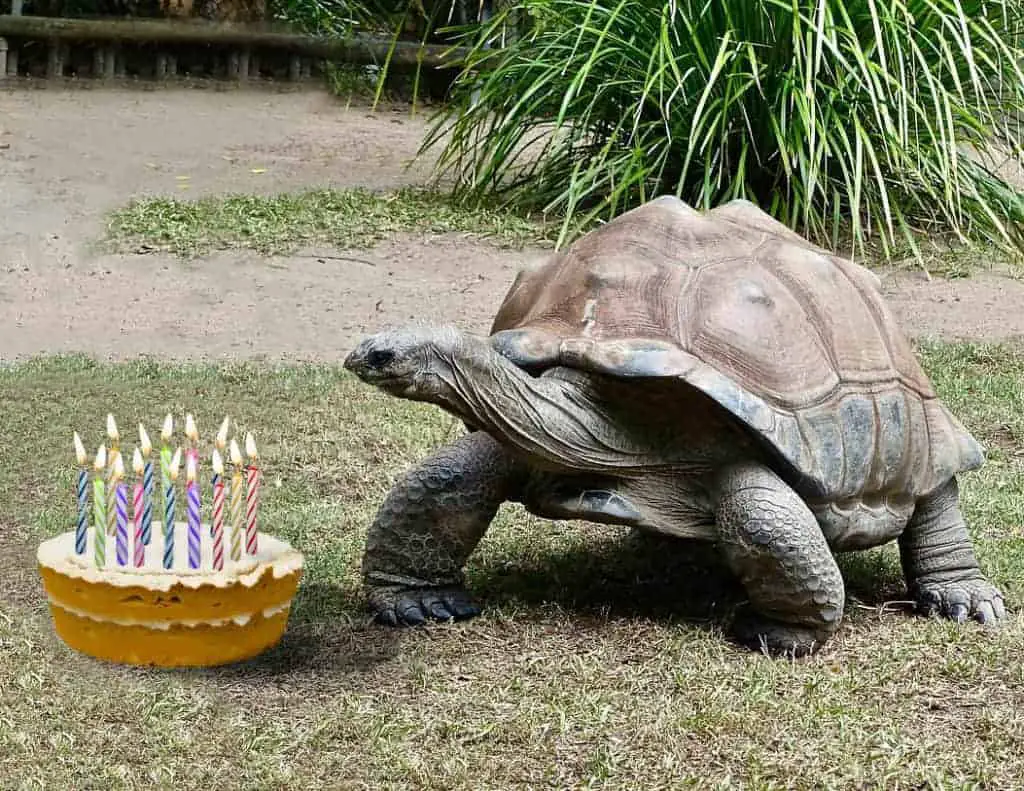
Tortoises are known for their gargantuan lifespans, with some species such as the giant tortoises of the Galapagos reportedly living for up to 200 years or more (although the current verified record holder lived to be 188 years old)
At the other end of the spectrum, the curiously low profiled ‘Pankcake Tortoise’ is a species with one of the shortest lifespans; usually no more than 30 years.
For some people thinking of keeping a tortoise as a pet, the thought of having to look look after something for that long; or indeed for someone else to take on the responsibility after they themselves have passed, is daunting to say the least.

For others the fact that tortoises live for so long is part of the attraction, but either way you need to know what you’re getting into before you commit to life as a tortoise keeper. It’s far better to choose a tortoise that suits your expectations and give it a good home rather than have to try get rid of it after a few years.
More or less all tortoise species are relatively long lived compared to most other pets. Whilst a dog that reaches the age of 15 would be considered elderly in most cases, it’s not uncommon for tortoises to live for at least 30 years, and even that would be considered young.
Generally speaking larger species reach more advanced ages than smaller species, in a way making them even more of a commitment. You need to be sure you can provide a decent spacious habitat for the full duration of their lives.

Whether your tortoise is a hatchling, or a contender for the longest lived tortoise in the world, if you’d like more detailed information on caring for your tortoise all in one convenient place, be sure to check out our species-specific eBooks on tortoise husbandry. These cover everything from properly setting up your tortoise habitat, to correct heating, feeding and breeding management.
Sulcata (African Spurred) Tortoise
Sulcata tortoises, or African Spurred tortoises are the third largest tortoise subspecies in existence, and the most common large breed kept in captivity.
As a baseline you can expect a Sulcata to live for a minimum of 70 years, but with proper care this figure should be much higher.
The good news is that Sulcatas are known for being pretty hardy creatures that graze on the pastures that form their homes, and do not need to hibernate, meaning in many ways they are fairly hands free for much of the time.
None the less they’re still a big commitment and you’ll almost certainly need to think about who will take on the responsibility of caring for them should you pass before your tortoise, especially given that sai person will also require a decent plot of land to keep the tortoise on.
Hermann’s Tortoise
Hermann’s tortoises are one of the most popular species to be kept as pets because they’re good all rounders as far as their husbandry requirements go. Whilst they still require an outdoor habitat to properly thrive, they never reach more than about 28cm (11”) in length, so their space requirements are more manageable.
Their lifespan is typically somewhere between 50 and 60 years, with the oldest captive specimen in the UK recorded at 110 years. So they’re still a lifelong commitment, but perhaps with the advantage of being easier to pass on when/if the time comes.
Russian Tortoise
Like Hermann’s tortoises, Russian tortoises are a popular small to mid sized breed.
Russians can reach a length of 25cm (10”) making them slightly smaller than Hermman’s tortoises, and as per the rule of thumb they live shorter lives, at an average of 40 years.
Perhaps thinking of Russian tortoises as two or 3 times the lifetime commitment of a family dog would be a good starting point!
Greek Spur Thigh Tortoise
Alongside Hermann’s tortoises, Greek Spur Thigh tortoises are a popular species that hail from the mediterranean. They grow to a similar size, and in general reach a similar maturity to Hermanns tortoises, although much older specimens of well over 100 years have been reported.
Red Foot Tortoise
Known for their distinctive red markings and omnivorous diet, red foot tortoises are a medium size tortoise breed, typically reaching 30cm (12”) at maturity, although specimens have been known to reach 45cm (18”) in some cases.
Despite their large size Red Foots aren’t especially long lived, relatively speaking anyway, with typical specimen kept in captivity living for between 30 and 50 years.
Must be that meat heavy diet!
Indian Star Tortoise
Indian Star tortoise are another small to medium size tortoise, known for being notoriously difficult to care for given their propensity for illness.
Unfortunately many Indian Stars never reach a mature age, but if you’re a superstar carer you can expect them to live for up to 80 years.
Marginated Tortoise
Marginated tortoises are the largest native European species, particularly noted for their unusual flared shell. You can expect a fully grown adult to reach a length of 35cm (14”) and quite comfortably reach 100 years of age, although an additional 30 or 40 years on top of that is also quite possible.
In some ways this makes Marginated tortoises one of the most demanding breeds to look after. They have a lifespan close to that of a Sulcata tortoise, but unlike a Sulcata they must be correctly hibernated every year.
100 plus years of hibernation in captivity is no mean feat!
Leopard Tortoise
Like the Sulcatas they share a continent with, Leopard tortoises are a large grazing species that are long lived. You’re looking at another lifetime and a half’s commitment, at around 100 years, plus of course, you’ll need the space and verdant pastures for them to lead a healthy existence.
Pancake Tortoise
At the short life span end of the spectrum is the poor old Pancake Tortoise, which usually doesn’t live beyond 25 to 30 years.
Of course Pancake tortoises are unique in a number of ways, not least their flat shell and exceptional agility, owing to their lightweight bone structure.
Their behaviour has a charm all of its own and shouldn’t be overlooked even if it won’t be enjoyed for as long as some of the other species on offer.

